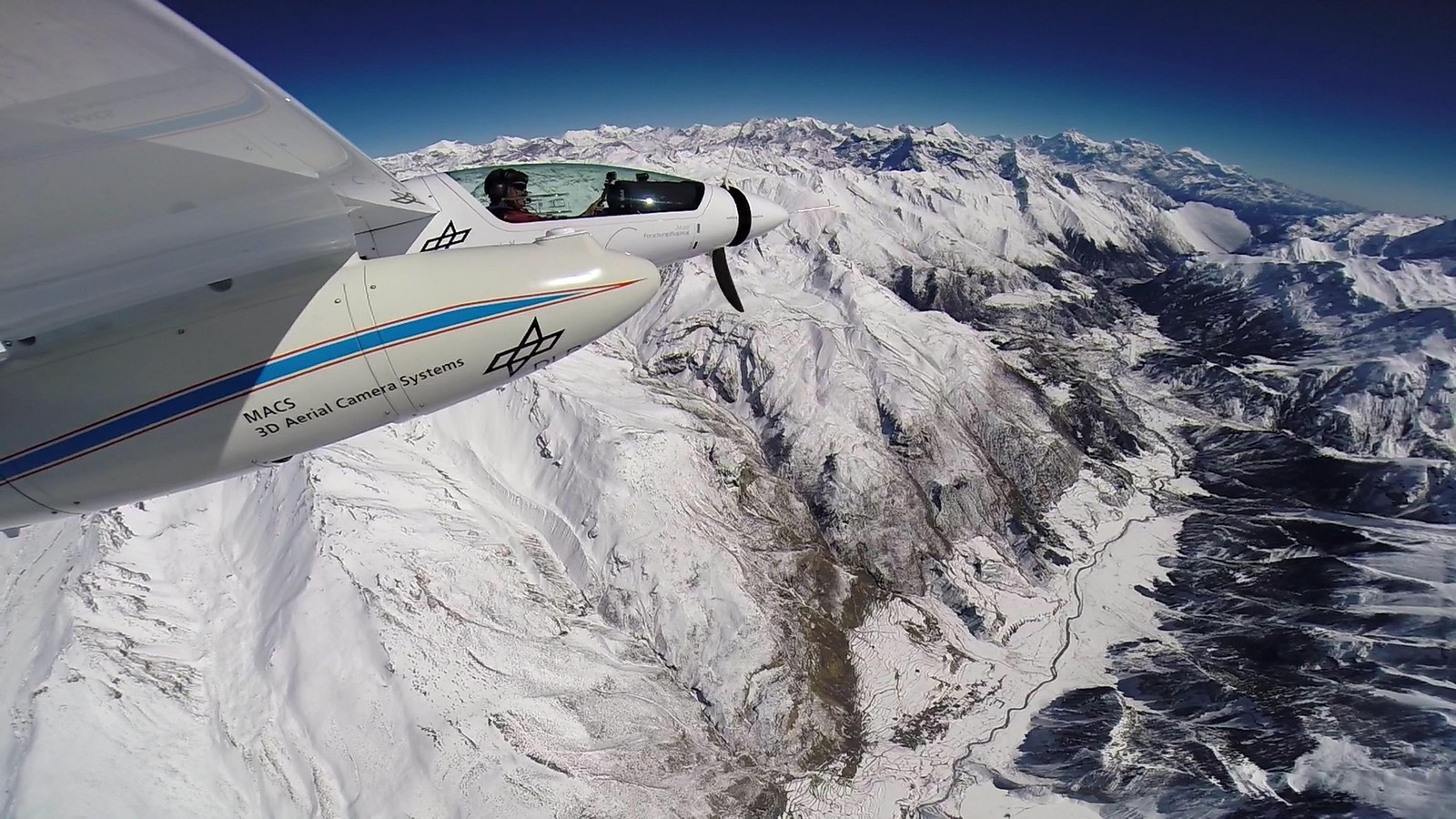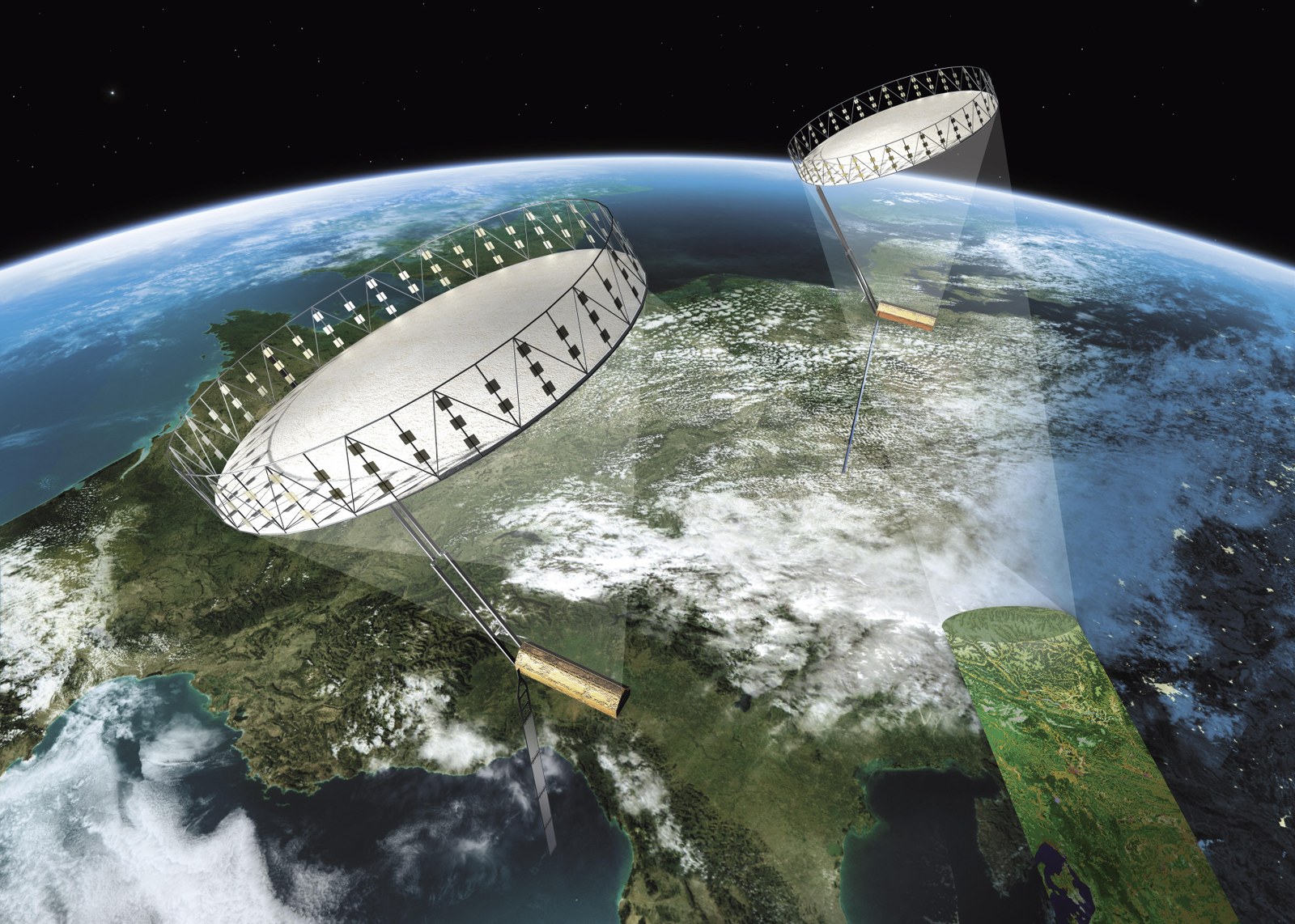Paris Air Show 2015 – DLR at Le Bourget


Under the catchphrase 'Knowledge for Tomorrow', the German Aerospace Center (Deutsches Zentrum für Luft- und Raumfahrt; DLR) is presenting its technological innovations in aerospace at the Paris Air Show. The 51st Air Show in Paris, one of the largest and most important aerospace exhibitions in the world, provides an exciting platform for leading representatives of the industry. From 15 to 21 June, 2015, the latest developments in aerospace will be on show at Le Bourget airport. In Hall 2C, in the German Pavilion, DLR will showcase 17 exhibits. In the outdoor area, DLR will display the largest member of its research fleet, the Airbus A320 Advanced Technology Research Aircraft, D-ATRA.
Early detection of forest fires
Forest fires are a danger for both humans and nature; they contribute to air pollution and can harm the economy. However, if they are they discovered early enough, the risks can be reduced and the damage minimised. The Bi-spectral Infrared Optical System (BIROS), a mini-satellite developed at the DLR Institute of Optical Sensor Systems should, as part of the FIREBIRD mission and in conjunction with the TET-1 satellites, be able to detect forest fires early.
Early detection of forest fires
The two Earth observation satellites TerraSAR-X and TanDEM-X – the Earth in three dimensions are currently scanning Earth, completely independent of the weather and from a height of 500 kilometres using radar signals. Just a few hundred metres away from one another, they are creating a high-resolution 3D model of the entire land surface of Earth. Such radar technology can also record the traffic on roads and waterways, map flooding and detect landslides.
DLR presents a mission concept
Tandem-L is a satellite mission for the global observation of dynamic processes on Earth’s surface. At a never previously achieved quality and resolution, the two satellites will cover a 350-kilometre wide swathe while flying in formation – regardless of the time of day and the weather. DLR is presenting the mission concept at the show stand.
Quick overview in the event of disaster
When a natural disaster occurs, geographical images and accurate altitude information on the affected area are very important for providing rapid assistance and making an assessment of the damage. With the Modular Aerial Camera System (MACS-Himalaya project homepage), developed and built by DLR, this is now possible. Detailed, colour 3D models can be computed from the MACS images. In January 2014 for example, images were acquired of Pokhara, Kathmandu and the Mount Everest region of Nepal; after the devastating earthquake in April 2015 these were sent to aid workers at the scene.
New test stand for European Ariane launcher
In September 2014, DLR and ESA laid the foundation stone for the new P5.2 upper stage test stand at the DLR Lampoldshausen site. Here, future upper stages of the new Ariane-6 launcher will be tested. These include tests for assessing refuelling and defueling as well as hot running tests of the stage with the Vinci engine. With this new facility at DLR in Lampoldshausen, complete cryogenic upper stages can be qualified as well as engines and components – a new possibility for Europe – demonstrating the leading position of DLR in this area. At the same time, DLR is making a decisive contribution to the development of the Ariane program and is contributing to the preservation of autonomous access to space for Europe. The commissioning of the unique European P5.2 test stand will take place in 2018.
Around the world at 20 times the speed of sound
Travel from Europe to Australia in 90 minutes – the DLR SpaceLiner concept will make exactly that possible. Similar to a Space Shuttle, the SpaceLiner, developed at the DLR Institute of Space Systems will use its rocket engines to take off vertically. The reusable booster stage then separates from the orbiter and the passenger capsule, which seats 50 people, begins its glide at 20 times the speed of sound after eight minutes.
Comet chaser
The Rosetta mission is designed to investigate the origins of the Solar System. For this purpose, one of the oldest bodies in the Solar System was chosen – a comet from the Kuiper belt named 67P/Churyumov-Gerasimenko. ESA's Rosetta spacecraft has been orbiting the 4.5-million-year-old comet since May 2014. On 12 November 2014, the Philae spacecraft landed on the comet. The lander is a joint project of DLR, the Max Planck Institute for Solar System Research, the French Space Agency, CNES and the Italian Space Agency (ASI). All ten instruments installed on Philae were used in its first 64 hours on the comet's surface. After that, the lander transitioned into a dormant phase because the power from its batteries were exhausted.
Deep-sea diver
As part of the Helmholtz Robotic Exploration of Extreme Environments (ROBEX) project, together with its partners the DLR Robotics and Mechatronics Center is developing a Docking Interface System. The involved institutions are collaborating on technologies that will enable extreme environments such as the ocean depths and Earth's moon to be explored. The semi-automatic docking system is able to transmit power and data between a robot arm and scientific instruments and is more secure, reliable and robust.
Always in touch
Since May 2013, the ESA PROBA-V satellite has been orbiting Earth with an Automatic Dependence Surveillance Broadcast (ADS-B) signal receiver on board. These signals are transmitted from the aircraft and contain information on their position, speed and identity. However, ground stations can only cover certain areas, for example, an aircraft over the Atlantic is not covered. This gap will now be closed with the aid of monitoring from space.
Fuel research for aircraft
Together with NASA and the Canadian National Research Council, DLR scientists are working towards answering the question of how carbon dioxide emissions from aviation can be reduced. The purpose of the ACCESS-II project (Alternative Fuel Effects on Contrails and Cruise Emissions) in 2014 was to measure the emissions of a biofuel-kerosene mixture at a typical cruising altitude of 100 metres to 20 kilometres. In future, as part of ECLIF (Emission and Climate Impact of Alternative Fuels), DLR will continue to research alternative fuels.
Combustion chamber optimisation
On their test stand, researchers at the DLR Institute of Combustion Technology can look into the innermost part of engines – the combustion chamber. These observations and analyses provide important basic knowledge, enabling innovative gas turbines to be developed. Amongst other things, how flames behave in different air-fuel mixtures is being explored. In this way, the efficiency can be increased and emissions reduced.
Airport 2.0
The Optimode project will be tested using the example of 'airport transfer hubs'. How do passengers get to the airport? What happens if a train with 80 passengers is delayed? In the control centre, all relevant planned and actual times and dates of flights, as well as movements by transportation providers and travellers are collected and merged. The aim of the project is to be able to make adjustments depending on the situation - such as opening more security checks, changing the departure time or rerouting passengers to their gate.
Improved wing leading edges
At the DLR Institute of Composite Structures and Adaptive Systems, researchers have merged design contradictions with one another; the 'droop nose' is a smooth, flexible leading edge that combines flexibility with rigidity. The aim of this development is to reduce drag, fuel consumption and noise emission caused by the airframe.
A different way of flying
A FanWing is characterised by a cylindrical rotor cage along the leading edge of the wing, which rotates to generate propulsion and lift. A FanWing aircraft is not equipped with the standard engines beneath the wing or on the fuselage. Instead, the blades of the rotor cage causes the air required for propulsion to flow directly across the wings, enabling the FanWing to operate from extremely short runways.
DLR ATRA research aircraft
In the static display at the Paris Air Show, DLR is exhibiting its A320 Airbus, D-ATRA (Advanced Technology Research Aircraft). It is the largest member of the DLR fleet and has been in service since 2008. Numerous modifications had to be made to the aircraft for its use as a research and test aircraft. The focus lies on, amongst other things, tests of aeroelastic measurement procedures, research into interior acoustics, measurements of flow noise, new comfort and safety features, as well as the measurement of vortex drag. ATRA is a unique research platform in the field of aerodynamics, avionics and propulsion technology.
Is it also quieter?
Slower landing also means quieter landing. How much slower, steeper and quieter a modern airliner can fly to its destination airport is being tested by DLR researchers in the High lift Inflight Validation (HINVA) project. For this purpose, observing how the airflow behaves over the wings, high-lift devices and engine nacelles is crucial. This has now be measured with unprecedented accuracy and detail. The results are important for new concepts of aviation and benefit the entire aviation industry. The measurement probes are still mounted on the wings of ATRA and the instrumentation racks on the aircraft can be viewed.

